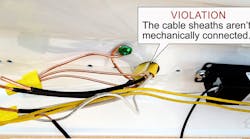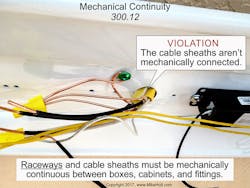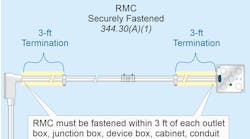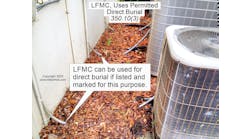Underlined text indicates a change in the rules for the 2017 NEC.
Q. What are the NEC rules regarding mechanical continuity of raceways and cable sheaths?
Scroll Down to See the Answer
A. Raceways and cable sheaths must be mechanically continuous between boxes, cabinets, and fittings [300.12].
Exception No. 1: Short sections of raceways used to provide support or protection of cable from physical damage aren’t required to be mechanically continuous [250.86 Ex 2 and 300.10 Ex 1].
Exception No. 2: Raceways at the bottom of open‑bottom equipment, such as switchboards, motor control centers, and transformers, aren’t required to be mechanically secured to the equipment.
When raceways are stubbed into an open‑bottom switchboard, the raceway, including the end fitting, can’t rise more than 3 in. above the bottom of the switchboard enclosure [408.5].
These materials are provided to us by Mike Holt Enterprises in Leesburg, Fla. To view Code training materials offered by this company, visit www.mikeholt.com/code





